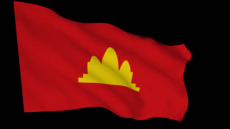
Scholars have hotly contested the history of Pol Pot’s Khmer Rouge for decades, responsible as they were for the genocide of ‘both minorities and the majority Khmer alike’, yet less attention is given to the divide in the historiography of the Khmer Rouge’s rise to power. In considering this there are really only two established schools of thought. One argues that internal struggles within Cambodia paved the way for Pol Pot’s ascension to power in a politically troubled nation whilst the polar opposite argument believes that indigenous forces allowed for the rise of this murderous yet seemingly nationalistic regime. It is worth noting at this stage that due to the associated blame attached to the group or nation deemed responsible for allowing the rise of the Khmer Rouge, even indirectly, there is frequently a political edge to any sources discussing the topic. In reality, it is naïve to disregard either the argument of indigenous sources or international forces, but further to this many scholars seem to overlook the third factor in the rise of the Khmer Rouge and that is mixed influences. There was undoubtedly a middle ground of both external and internal thought for ideology and political practises which must be considered separately to indigenous or external factors. This paper will therefore aim to conclude to what extent any of the three possible factors noted above were perhaps more responsible and to what extent for the Khmer Rouge’s seizure of power in Cambodia in 1975.
Most weight is given within the field to the role of indigenous forces in Cambodia, indeed Vickery states that ‘the major determinants of the course of the Cambodian revolution were local ones and that integrating their delineation with a discussion of foreign relations distracts from the more important aspects.’ This statement is representative of the majority opinion, unfortunately alienating the possibility of incorporating both internal and external factors into a conclusion for the rise of the Khmer Rouge. For the sake of structure however, let us first consider the various factors separately before comparing them. The Khmer Rouge, in 1971, ‘needed a combination of political, economic, diplomatic and military successes over the Lon Nol regime in order to drive it from power’ so the role of the Khmer Republic forces under Lon Nol were of course crucial to halting the tide of communist thought that was the Khmer Rouge. Unfortunately, Lon Nol was a political leader not a military general and his lack of battlefield knowledge soon became evident in the number of casualties sustained against the Khmer Rouge’s Guerrilla Forces, particularly in the Chenla II offensive in which some 3000 or more Government troops were lost. As a result of the Government’s failures against the Communist forces, many people and in particular the Cambodian army began to defect and join the guerrilla forces, perhaps fearing their wrath as the opposition or maybe truly believing that the Khmer Rouge would, once in power, restore national interests and order to Cambodia. Whatever their motives, the failure of the Khmer Republic was a decisive factor in the rise of the Khmer Rouge, and is one mostly unaffected by external factors.

0 Comment:
Be the first one to comment on this article.